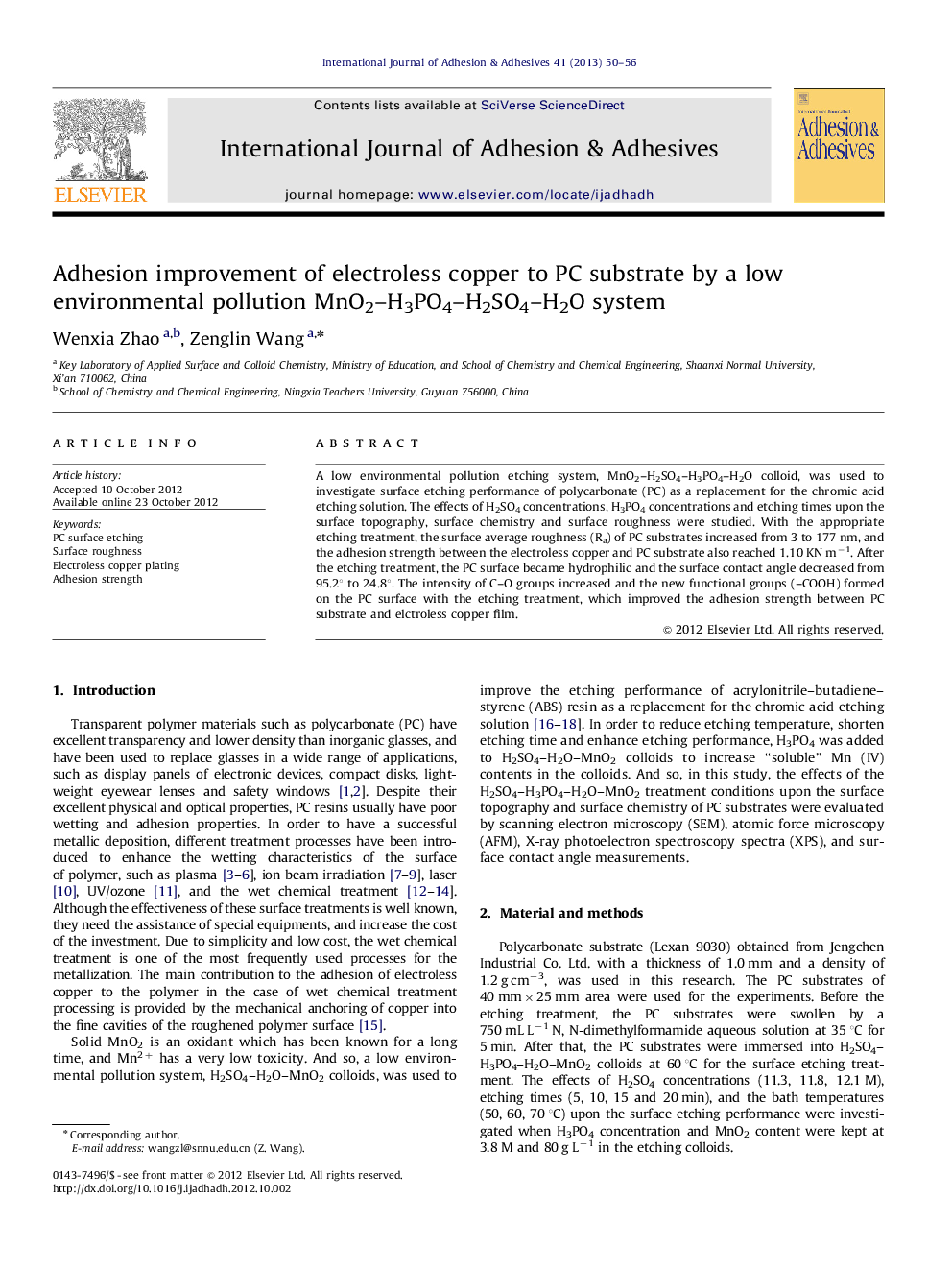| Article ID | Journal | Published Year | Pages | File Type |
|---|---|---|---|---|
| 776914 | International Journal of Adhesion and Adhesives | 2013 | 7 Pages |
A low environmental pollution etching system, MnO2–H2SO4–H3PO4–H2O colloid, was used to investigate surface etching performance of polycarbonate (PC) as a replacement for the chromic acid etching solution. The effects of H2SO4 concentrations, H3PO4 concentrations and etching times upon the surface topography, surface chemistry and surface roughness were studied. With the appropriate etching treatment, the surface average roughness (Ra) of PC substrates increased from 3 to 177 nm, and the adhesion strength between the electroless copper and PC substrate also reached 1.10 KN m−1. After the etching treatment, the PC surface became hydrophilic and the surface contact angle decreased from 95.2° to 24.8°. The intensity of C–O groups increased and the new functional groups (–COOH) formed on the PC surface with the etching treatment, which improved the adhesion strength between PC substrate and elctroless copper film.
